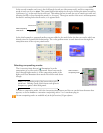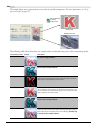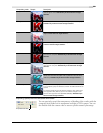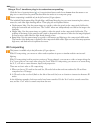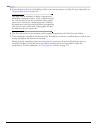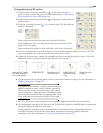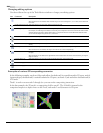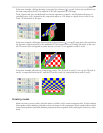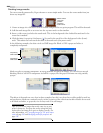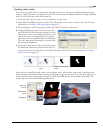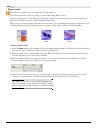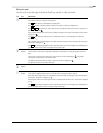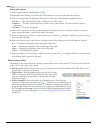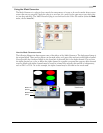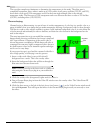
CHP. 14 USING VIDEO FX, COMPOSITING, AND MASKS
257
In the next example, clicking the Make Compositing Parent button ( ) on track 3 forces the track below (at
the same compositing level) to be rendered in 3D and composited as a 2D image.
Track 4 (green-and-gray checkerboard) now has the appearance of depth—the checkerboard tapers to a
vanishing point—but is inserted in the composited output as a 2D image at a depth of zero on the Z axis.
Track 2 is still rotated in 3D space.
In the next example, clicking the Make Compositing Parent button ( ) on track 3 again forces the track below
(at the same compositing level) to be rendered in 3D and composited as a 2D image. However, in this case,
the 3D rotation that was applied as parent motion on track 1 is not applied to tracks 3 and 4.
In the next example, all tracks are compositing parents. The 3D track on track 2 is on top, the 2D track in
track 3 is composited below track 2, and the 3D track in track 4 is composited below tracks 3 and 4.
Creating masks
Masks are used to create overlays, limit the effects of a filter, and to create transparent titles. In their simplest
form, masks work by making a particular color in an image or video transparent. More complex effects can be
created with gradients (smoothly blending transparent areas together) and by altering the sensitivity of the
mask.



